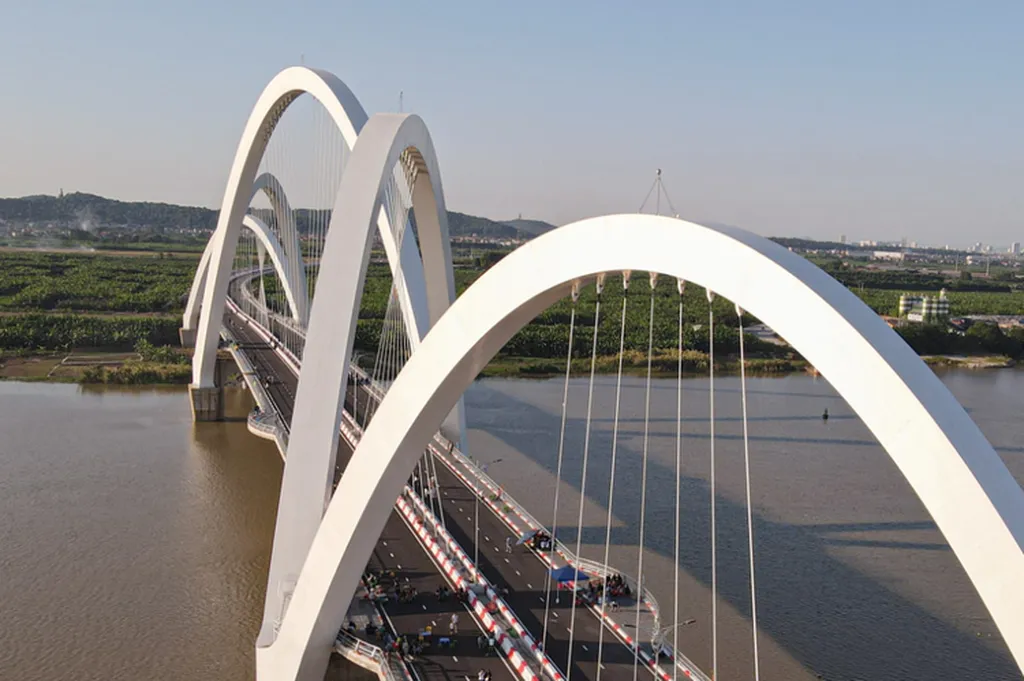In the heart of Vietnam’s bustling cities, a silent revolution is taking place beneath the wheels of countless vehicles—steel box girder bridges are becoming the backbone of modern infrastructure. Yet, as these structures rise, so do concerns about their long-term performance, particularly the warping and distortion that can compromise their safety and durability. A groundbreaking study led by Trong Chuc Nguyen of Le Quy Don Technical University in Hanoi is shedding new light on this critical issue, offering insights that could reshape the future of bridge construction.
Nguyen’s research, published in the *International Journal for Computational Civil and Structural Engineering* (translated as *Tạp chí Quốc tế về Kỹ thuật Xây dựng và Cấu trúc Toán học*), focuses on the often-overlooked phenomenon of cross-sectional distortion in steel box girders, particularly during buckling. “This distortion can significantly affect the structural performance and safety of the bridge over time,” Nguyen explains. His study delves into the intricate interplay between three key factors: the size of the cross-section, the type of longitudinal link used, and the distance between these links.
Using the finite element method (FEM), a powerful simulation tool, Nguyen and his team conducted a series of detailed analyses to model the structural behavior of steel box girders under various conditions. The results were striking. “These parameters have a substantial influence on the deformation patterns and overall stability of the steel box girder,” Nguyen notes. The findings suggest that by carefully optimizing these factors, engineers can design bridges that are not only stronger but also more resilient to the forces of nature and time.
The implications of this research extend far beyond the borders of Vietnam. As cities around the world grapple with aging infrastructure and the need for more robust, long-lasting bridges, Nguyen’s work offers a roadmap for enhancing design standards and construction practices. “The results of this research contribute valuable insights that can assist engineers in designing more efficient and safer steel box bridges,” Nguyen says. This could lead to significant cost savings and improved safety outcomes, benefiting both the construction industry and the public.
For the energy sector, the commercial impacts are equally profound. Steel box girder bridges often support critical energy infrastructure, such as pipelines and power lines. Ensuring their stability and longevity is paramount for maintaining uninterrupted energy supply. By adopting the findings of Nguyen’s research, energy companies can mitigate risks and enhance the reliability of their infrastructure networks.
As the world continues to urbanize and infrastructure demands grow, the need for innovative solutions in bridge construction becomes ever more pressing. Nguyen’s research is a testament to the power of scientific inquiry in driving progress. By addressing the challenges of warping and distortion head-on, engineers can build bridges that stand the test of time, quite literally. As Nguyen puts it, “The findings serve as a useful technical reference for current and future bridge design projects, helping to enhance both design standards and construction practices.”
In the end, this research is not just about steel and concrete; it’s about the people who rely on these structures every day. It’s about ensuring that the bridges we build today will still be standing strong for generations to come. And in that sense, Nguyen’s work is a beacon of hope for a future where infrastructure is not just functional but also resilient and safe.

